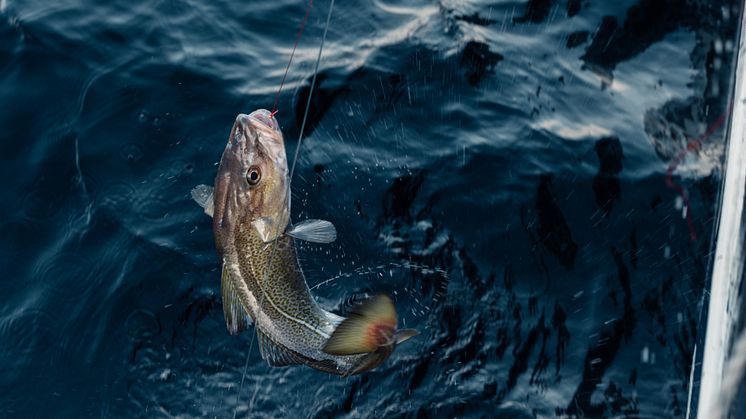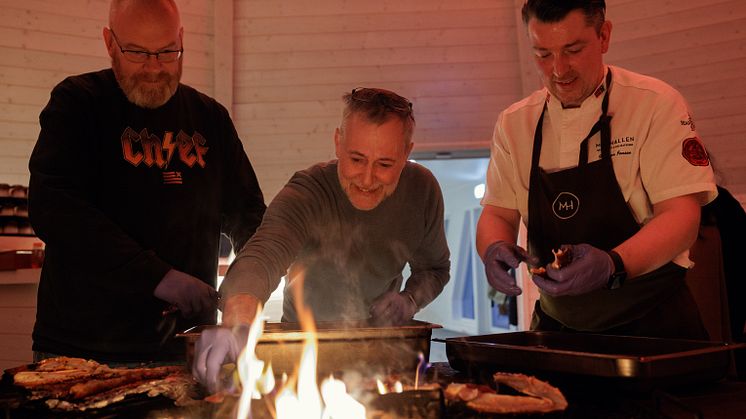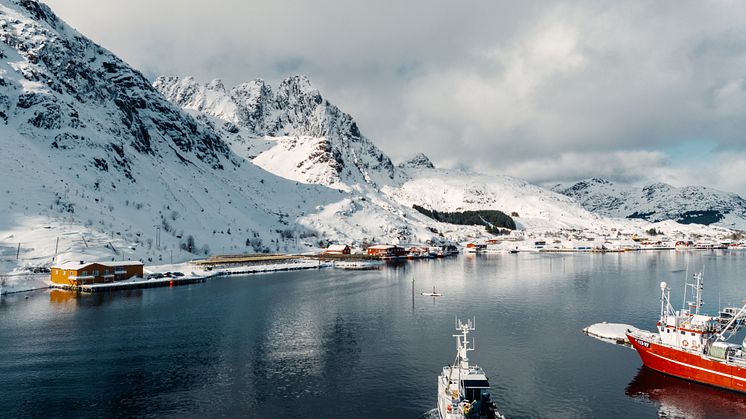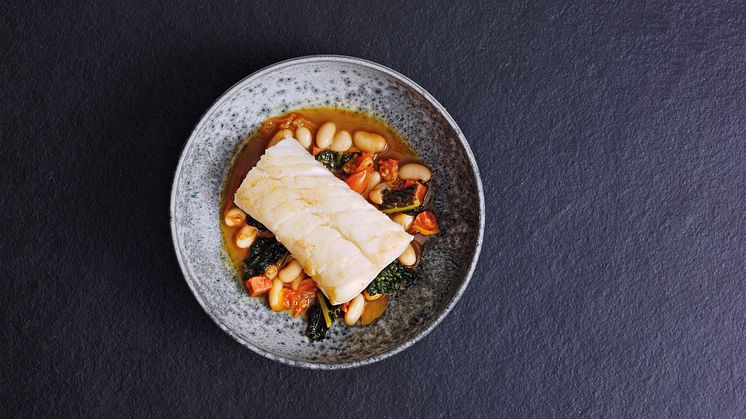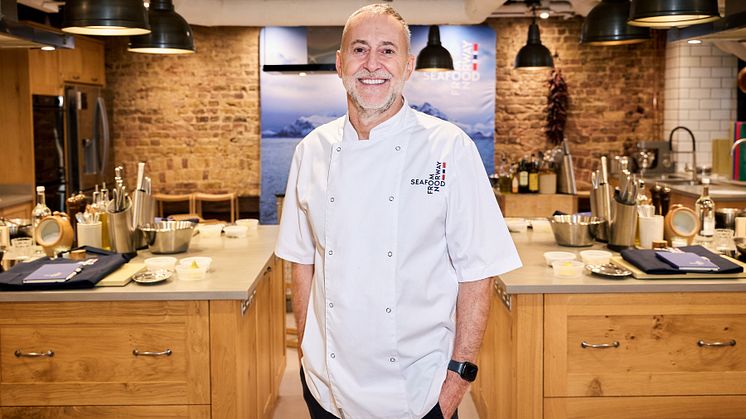
News -
From traditional serves to beautiful comfort food: feasting on Norwegian seafood with Michel Roux
Renowned chef and Seafood from Norway ambassador shares his passion for Norway, its Skrei cod and sustainable seafood.
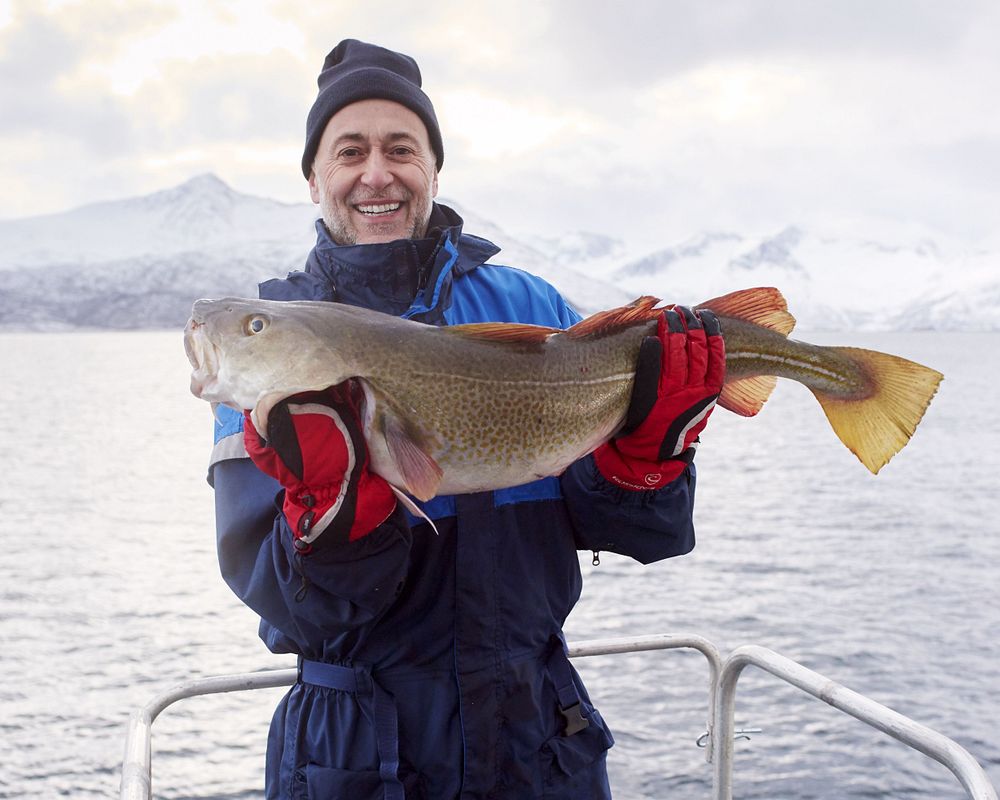
What would Michel Roux like to see more of in British cuisine? ‘Cod stomachs’ he answers – only half joking. This is a dish the legendary chef and Norwegian Seafood Council ambassador has enjoyed fresh-caught in Norway in the form of Skrei mølje, a traditional serving of the seasonal Norwegian cod, where the highly prized fish is served poached with its roe, liver and sometimes also the stomach, alongside potatoes and onions, beer and Aquavit. ‘It is absolutely glorious,’ beams Roux. ‘I love it!

While he admits this is unlikely to go mainstream, Roux did serve cod stomach at Le Gavroche, the world famous London restaurant opened by his father and uncle, which became the first in the UK to be awarded three Michelin stars and which Roux took the decision to close in January 2024. ‘I actually had some imported to Le Gavroche when it was open – cod tripe we called it – and we put it on the menu as a garnish with cod.’
Elsewhere, he offers up a different take on a unique product available only in the first months of the year. ‘My Skrei with cannellini beans and chorizo is a really great place to start. The beans are lovely because they soften and pick up all the juices from the chorizo and the fish. But it’s also just a nice, easy bake-in-the-oven kind of recipe where – dare I say! – you can’t really overcook the fish.’ This is a recipe that Roux recommends for home cooking too: ‘It’s real comfort food,’ he says.

Sustainability – and respect for the fish
Skrei mølje might be a niche choice, but for Roux, it is the dish that embodies Norway. He talks about the culture and tradition attached to Norwegian seafood – from the children who have a role in preparing Skrei to the respect for a food that has sustained Norwegians over hundreds of generations. This represents a wider philosophy and something that is close to his heart: ‘I’m a firm believer that if you take the life of an animal, then you should use all of it,’ he says. ‘And that should be the same for fish. We know there should be zero waste where possible.’

This in turn ties into the broader drive around sustainability in seafood – something Roux sees both in his teaching at catering colleges and among diners.
‘Younger chefs are definitely more attuned to sustainability issues,’ he says. ‘They understand it and, where possible, will seek out sustainable produce because it’s been drummed into them.’ Good food values are also a draw for those seeking a great dining experience, he adds. ‘We see it in restaurants as well: guests want to know where their food comes from, be it fish or animal protein or vegetables even. And they are very happy when it is either written on the menu or front of house can tell them where their food comes from. That really is something that’s changed over the years.’
Roux sees Norwegian seafood as an ally in his approach to food values. Again, he points to Skrei – the ‘beautiful white, pearly, cod’ that he stresses ‘is not just cod’ – as an example of the coming together of unmatched quality and sustainability. ‘Skrei is a great example of fisheries management in Norway,’ he says.
Source of inspiration
If Roux is a chef who views his position – from Le Gavroche to MasterChef and work on the Food Network, to his cookbooks and training a next generation of chefs – as an opportunity to provide inspiration to others, then Norway and Norwegian seafood are a source of inspiration in his own kitchen.

Roux first visited Norway as a teenager, returning many times as a world-famous chef, running marathons, fishing for Skrei, feasting on seafood. He raves about Norwegian cod, cured trout – ‘which is an excellent product and can just be treated like a gravlax’ – halibut, prawns and crabs, scallops and ‘giant langoustine like miniature lobsters’.
So, working with Seafood from Norway was ‘a no-brainer’ he says. ‘I use the products, and I genuinely love the country.’



